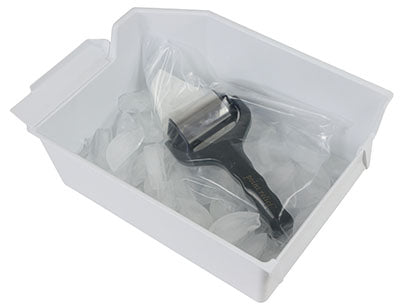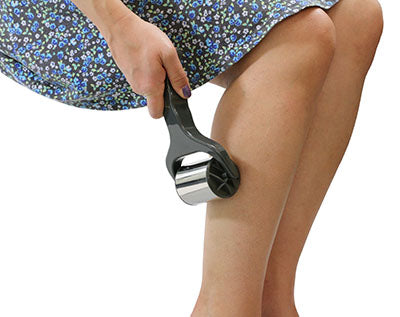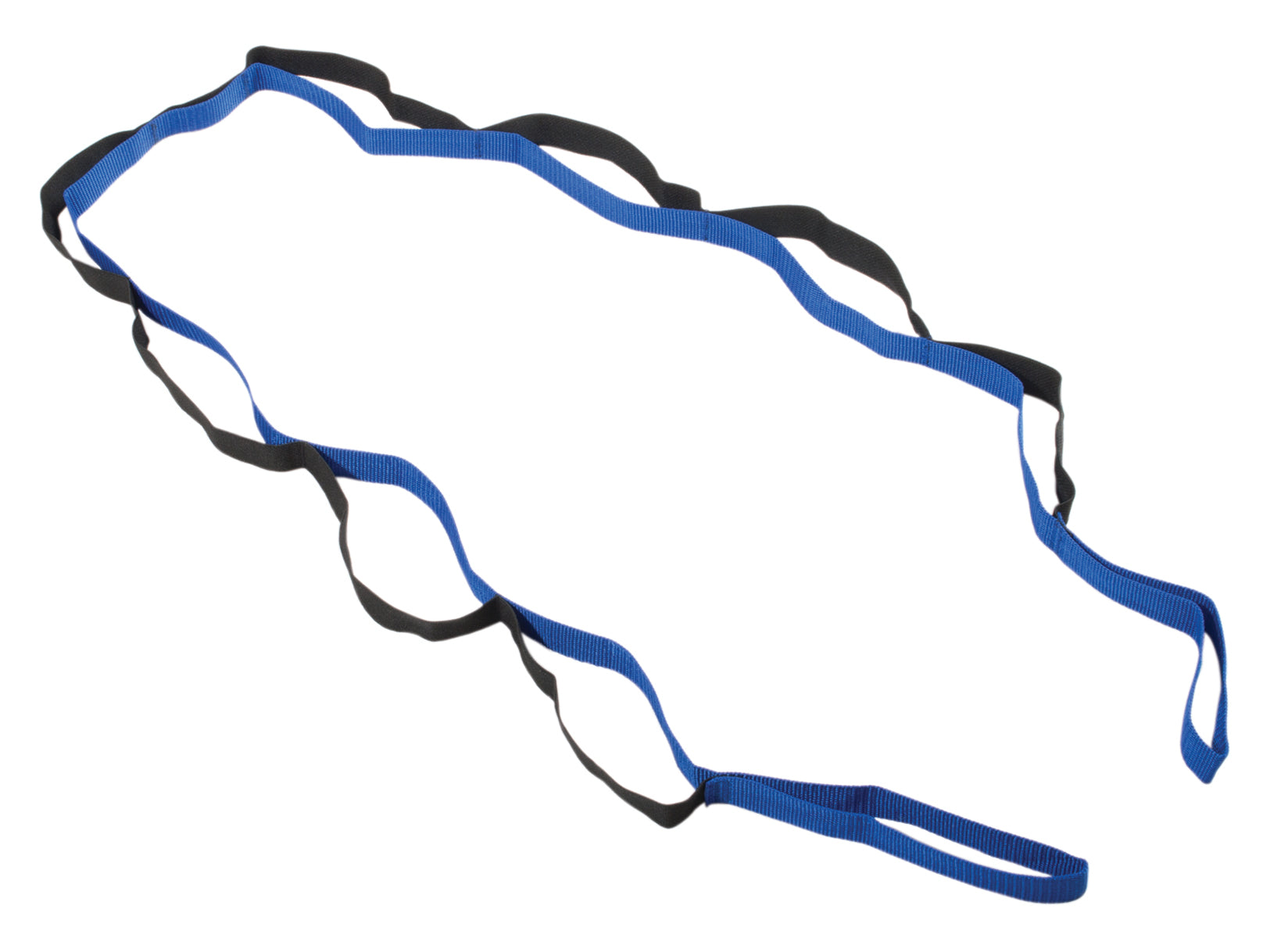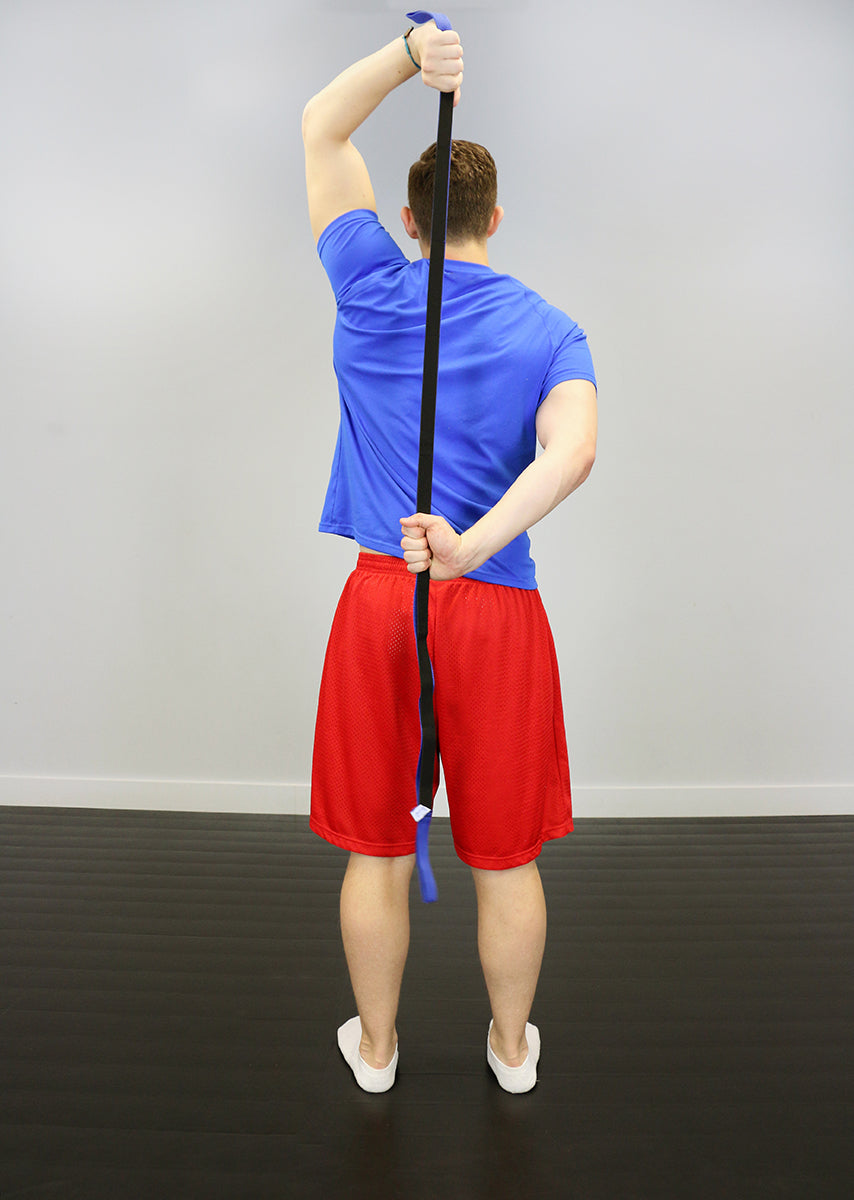"Three days out and I can’t _______."
This is probably every lifter’s all-too-familiar worst case scenario.
I just wrote an article about what I’m asked about most commonly:
knee pain and squatting. The thing I’m asked about most often after that with regard to injury and training is hip pain. More than half a dozen times in the last few months, that has been followed by, “I have a massive knot in what I think is my glute med.” This was also a recent questions in one of the forums, and right now, one that is hitting all too close to home for me.
I have a meet practically tomorrow. I can’t get down to the bar to pull. When I squat, I look like Bambi. And it’s not cute.
By the time this is published, I will have competed in Boss of Bosses 3, but it’s taken every bit of me not to pull out of the meet for a number of reasons.
I do my own programming, but use a rough version of the peaking cycle that
Swede has written in his
5thSet methodology. I was decently pleased with where I was — I hit the ambitious squat I wanted with a little wiggle room, benched a paused PR with some in the tank, and was feeling confident. And then I jacked up my hip helping someone move and my glute med turned into a grapefruit right before attempting a deadlift max.
RECENT: Troubleshooting Knee Pain While Squatting
“Ah, it's fine. I’ll throw some anti-inflammatories at it and hit the max next week.”
Not a bad plan if it’s backed with some pro-active management, but when you spend all day treating patients every 30 minutes and make them the single most important thing in the moment, the last thing you want to think about when you leave is how to treat yourself. If I’m going to drop one of the six plates I’m spinning, that’s the one: self care. Being a first year PT is exhausting because you are constantly challenged. If you aren’t, it’s because you’ve likely taken down your antenna.
So, a non-proactive week and a half later, not only can I not hit my 90% squat (or even unrack and walk the bar out without pain), but I realize I’ve now gone two weeks in a row where I can’t even get down to the bar to pull. I can’t move the way I need to for some of the work I do with patients during the day. Oh, and I have one of the biggest meets of the year right around the corner. Let’s not forget that.
I had a few options. Pull out of the meet, or go with lower expectations. I didn’t like either one, but figured going would be better than pulling out.
I had three days before I had my heavy deadlift attempt. I told myself if I couldn’t at least pull over 405 for a single, which I’d hit for triples only a few weeks prior, I wasn’t going to go. So in three days, I needed to go from being unable to get to the bar, to pulling over 400 using what minimal methods I could, no manual work, as though I were an athlete I were treating via distance. I’m not going to lie, it freaked me out a little bit to go so bare-bones, right before such a big meet, especially having access to things that likely would help. I put a bit on the line here.
Here’s what I did, and what I would suggest for most athletes with a short time frame to get through the few days right before a meet:
1. I got an experienced eye other than my own — and TRUSTED it.
I think this is the hardest part, especially when we as athletes are so protective of our bodies. We’re the ones that go through the training, and compete; putting that in someone else’s hands is scary. As a PT, it’s even harder for me to step back and give someone else the reins. I have an idea of what’s going on, but given how different a movement can “feel” from what it actually looks like, I needed to make sure I was being objective and not beating my head against a wall. I didn’t have a lot of time. One of the other PT’s I work with is a brain and a half (I swear they all are, I have no idea why I get to be part of this team) and I had her take a look at things.I’d known what I need to facilitate, but I couldn’t actually get it working, and had completely missed the boat on “how." We both agreed on returning what had worked for me in the past, and that the big picture “why” was that I was so stuck on my right side: every one of my lifts and how I did everything else during the day was right-oriented. Trusting was hard. And I had a few moments where I wondered if silly breathing exercises really could help get me back on the platform. I didn’t have a ton of time, so it made sense to put my eggs in this basket rather than jumping ship too soon.
2. I returned to what worked: PRI.
Generally, having watched some of my videos and knowing my body enough, I knew that my body was stuck on my right side, but in a tri-planar/3D model (not just left/right). My body has responded exceptionally well to PRI in the past, but this was a different injury, and I needed to trust the eye of someone else to help me work through it. My big problem was that in all my motions, I kept feeding straight into that right side, and I had accompanied increased tightness or tone throughout that “kept” me on my right side.Being able to feel the right thing is really important in the PRI based exercises, and I couldn’t find what I needed to or should have been able to before I started working with Karen. It’s why I was so stuck. She brought me down a bit of a different route:
A) Ischiofemoral stretch. When we consistently move asymmetrically through three planes of motion, it usually means that the ball and socket is oriented in a direction that requires less of certain parts of the joint capsule. So if that portion of the capsule is routinely not accessed, it changes the true ability to facilitate ball and socket change because there’s nowhere left for the ball to “go.” For me to achieve a more neutral hip/pelvis, and get off my right side, I needed to get onto my left. This stretch helps achieve that by letting the ball and socket sit more congruently.
B) 90/90 hip lift with balloon. This is very similar to the 90/90 hip lift, which I have demonstrated on video. I wish I’d been able to go to the Be Activated course that JL hosted a few weeks ago, but for now, diaphragm position/facilitation (left, especially!) assists not only with normalized motion, but helps decrease the demand on things like my lats and low back for postural support. or me, I’ve seen that as soon as my low back gets dialed up, things generally start to snowball.
C) Right lat stretch/ZOA (left ab) facilitation. Lats are a powerlifters best friend, right? Sort of. They can also be overdeveloped. Pull up a picture of someone with a hip shift and you’ll likely see that the right side looks closed down, while the left is “flared” open. Which hand do most people have palm down when they deadlift? When the right lat becomes overactive it can contribute to keeping us pulled over. It is a huge muscle and has influence over the SI joint, hips/pelvis, shoulder, and spine. The thoracolumbar fascia deserves an article on its own. Asymmetry not only in size but in tone level or neural accessibility can contribute to dominance (or preference). If you hold a plate in front of you and turn it, your left and right hands have both moved. Our hips and pelvis are the same way. So whether you have left or right pain, it may be worth looking into.
3. I kept motions pain-free.
If you’ve been dealing with an injury you know that you can almost feel the pain before it starts. We have to interrupt that anticipatory association cycle. Initially, any time I went into a hip hinge, I had familiar hip pain that occasionally radiated down my leg — loaded or unloaded and any sort of bending. I used that as my indicator in a test-retest model. When that motion returned pain free, I started slowly integrating movements to retrain the movement while encouraging improved mechanics.- Kettlebell RDL — Double then single leg.
- Cable Pull-throughs — Done very slowly next to a mirror to monitor spine and rib position, generating intentional tension throughout the glutes. These can also be done banded.
- Bottom Paused Deadlifts — I did these more to reintegrate the pulling pattern with proper bracing and pelvis position so my glute would chill out, and to re-establish a positive relationship (read: pain free) with the deadlift movement. I did these pulled to the top, then slowly lower the eccentric until the bar was just off the floor, paused there to feel position, then pulled to the top again. I kept them light, roughly 45-50%. Remember, this is more a positional drill than anything.
4. I did soft tissue work, self only, with an electric car buffer.
Yes, I could have someone do dry needling, ART, or whatever the hot new fad is. But if I’m you, and I may not have access to those things at the drop of a dime, I need another substitute. An electric car buffer works okay in a pinch to provide a little stimulation to the tissue. You can use this in a few different positions with the muscle in a little stretch or have someone else passively move your limb through the range of motion the muscle is involved in. Generally, I’m not a fan of mashing on tissue for long term management, but in some cases, it can be helpful to interrupt the stimulus or pattern present. Start very, very slow with this; if your pain is indeed muscular, you want to utilize the lowest possible stimulus for desired effect.5. I won the mental game.
This one is the hardest. When we anticipate pain, it kills us. You start thinking about that instead of all the things you should be before a heavy attempt. I had to step back from the main movement for a bit and reset my expectations. I’d planned on hitting a 440-pound deadlift when I started my peaking cycle and had to settle for less, but telling myself to have confidence in the strength and continue developing speed made a huge difference. If the pain is “there” but not affecting your movement, get your head in the game. You’re in or you’re out. Make a decision. Trust your training, and trust your strength. Do things that reinforce confidence and mechanics.This close to a meet, I knew I wasn’t going to get stronger, but deadlifts especially are a mental game. So I addressed that with speed, confidence, and mechanics. If your pain is affecting your mechanics considerably, it may be time to reassess whether you’re in a place to be doing what you are.
Obviously, it’s best to not be in this situation to begin with. After the meet, take the time needed to rebuild from the bottom up and remember that the single best thing you can ever do is address why, and listen to what your body is trying to tell you. Casey Williams did this recently and his dividends have paid off HUGE. I can’t give him enough credit for the patience and mental resolve it’s taken to stay the course in something.
We’ll see how Boss of Bosses goes, but the fact that right now I’m sitting on a plane still looking potentially at a PR total when I couldn’t bend over to touch my knees two weeks ago gets me excited.






































































